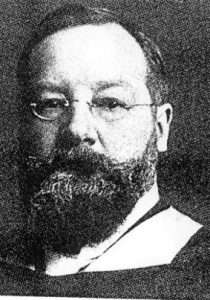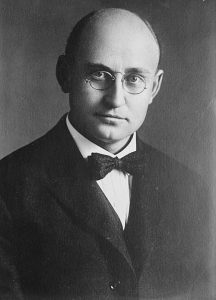1-2: Background to Help Us Understand Where I/O Psychology Comes From
 You might be rolling your eyes right now thinking, “Do I really need to memorize a bunch of dates and names of people who died before I was born?” Actually, yes—but not for the reasons you think.
You might be rolling your eyes right now thinking, “Do I really need to memorize a bunch of dates and names of people who died before I was born?” Actually, yes—but not for the reasons you think.
Understanding where I/O psychology came from helps you appreciate why the field works the way it does today and where it’s headed next. Plus, some of these “ancient” ideas are surprisingly relevant. The workplace challenges we’re dealing with right now—managing diverse teams, balancing efficiency with job satisfaction, adapting to disruptive technology—aren’t entirely new. Previous generations of smart people have wrestled with similar problems, and we can learn from both their successes and their spectacular failures.
The history of I/O psychology is really the story of how work itself has evolved, and understanding that evolution helps you navigate whatever changes are coming next in your own career. Plus, you’ll understand why Hugo Munsterberg is considered the “father of industrial psychology” (and fun fact: he’s also considered the father of forensic and clinical psychology—the guy was busy!).
Another key figure in the early development of I/O psychology was Lillian Moller Gilbreth, a pioneer in time-motion studies and one of the first female I/O psychologists. Her work combined psychology and engineering to improve industrial efficiency and worker well-being. Additionally, Bryan’s 1904 work on ‘real skills’ helped shift psychology toward practical applications, laying the groundwork for the applied focus of I/O psychology.
The Philosophical Roots: How We Actually Know Stuff
Before we dive into the nitty-gritty historical details, let’s take a quick detour into some surprisingly relevant philosophy. Stay with me here—this actually explains a lot about how I/O psychology approaches problems today.
The Ancient Debate: Thinking vs. Observing
Picture this: you’re in ancient Greece, and two of history’s greatest minds are having an argument that’s still going on today.
Plato (4th century BCE) believed that real truth comes from deep thinking and looking inward.

He thought the physical world was just shadows on a cave wall—imperfect copies of perfect, ideal forms that exist in some higher realm. This approach became known as rationalism—the idea that you can discover truth through pure reasoning and logic.

Aristotle (4th century BCE), Plato’s student (and the original rebel), had a completely different take. He basically said, “If you want to understand the world, get off your butt and go observe it.” Look at multiple examples, gather data, notice patterns. This became empiricism—learning through systematic observation and experience.
For centuries, these approaches were treated like competing sports teams. You had to pick a side. Then Francis Bacon showed up in the 1600s with a revolutionary idea: “Why not use both?”
Bacon’s Breakthrough: Why Not Both?
Bacon (1620) realized that rationalism and empiricism actually complement each other perfectly:
- Use rationalism to come up with theories and hypotheses about how things work
- Use empiricism to test those theories in the real world and see if they actually hold up

This combination became the foundation of modern science. But Bacon had another insight that’s particularly relevant to I/O psychology: scientific knowledge should actually be useful. It should help people solve real problems and improve their lives. His motto was “Knowledge is Power”—not power over people, but the power to make the world better.
Bacon even distinguished between two types of experiments:
- “Light-bearing experiments” that help us understand how things work
- “Fruit-bearing experiments” that solve practical problems
Sound familiar? This is exactly what modern I/O psychology does—some research focuses on understanding workplace behavior, while other research tackles specific organizational challenges. The field has been following Bacon’s playbook for over a century.
The philosophical foundations of psychology continued to develop through the work of other key thinkers. Descartes (1641, 1649) contributed to our understanding of the mind-body relationship and the nature of human emotions. Locke (1689) emphasized the role of experience in shaping knowledge, while Hume (1739-1740) questioned our ability to know absolute truths. Wolff (1732, 1734) was among the first to systematically distinguish between empirical and rational approaches to psychology.
Early Psychology’s Identity Crisis
When psychology first emerged as a scientific discipline in the late 1800s, it faced a classic identity crisis that’s still relevant today. Should psychologists stay in their laboratories focusing on pure science, or should they get their hands dirty solving real-world problems?

Edward Titchener, one of early psychology’s heavy hitters, was firmly in the “pure science” camp. He thought psychologists weren’t ready to tackle practical problems yet—the theories just weren’t developed enough. Better to focus on understanding basic mental processes first.
But the world wasn’t going to wait around for perfect theories. Organizations had people problems that needed solving, and research funding increasingly depended on showing practical results. So psychology gradually evolved to include both basic scientists and applied practitioners, with theory and application developing hand in hand.
The First Consulting Psychologist
Harry Hollingworth deserves credit as one of the first psychologists to prove that the field could tackle real business problems. When Coca-Cola got sued over claims that caffeine was harmful to health, they hired Hollingworth to conduct research that could help their legal defense. His work not only helped Coca-Cola but also established that psychologists could provide valuable consulting services to business.

The variety of problems Hollingworth worked on shows just how broadly psychology could be applied:
- How should you interview job candidates in rural areas?
- Do different perfumes actually affect people’s moods and behavior?
- When’s the best time to run advertisements for maximum impact?
- What’s the optimal height for workbenches to prevent fatigue?
- What colors should railroad cars be painted for maximum visibility and safety?
- How can you design traffic signs that people can actually read quickly?
- Do men and women have different purchasing patterns?
- Should advertising focus more on what people hear or what they see?
- How do you identify candidates who’ll be good at clerical work?
- Which fonts and typefaces are easiest to read under different conditions?
This wasn’t random consulting work—Hollingworth was demonstrating that psychological principles could inform almost any aspect of human activity. He was basically creating the template for what would become I/O psychology.
Media Attributions
- Why Study History © Jay Brown and Copilot
- Plato is licensed under a Public Domain license
- Aristotle is licensed under a Public Domain license
- Portrait of Francis Bacon © Paul von Sommer is licensed under a Public Domain license
- Edward Titchener © Unknown is licensed under a Public Domain license
- Harry Hollingworth © Library of Congress is licensed under a Public Domain license
